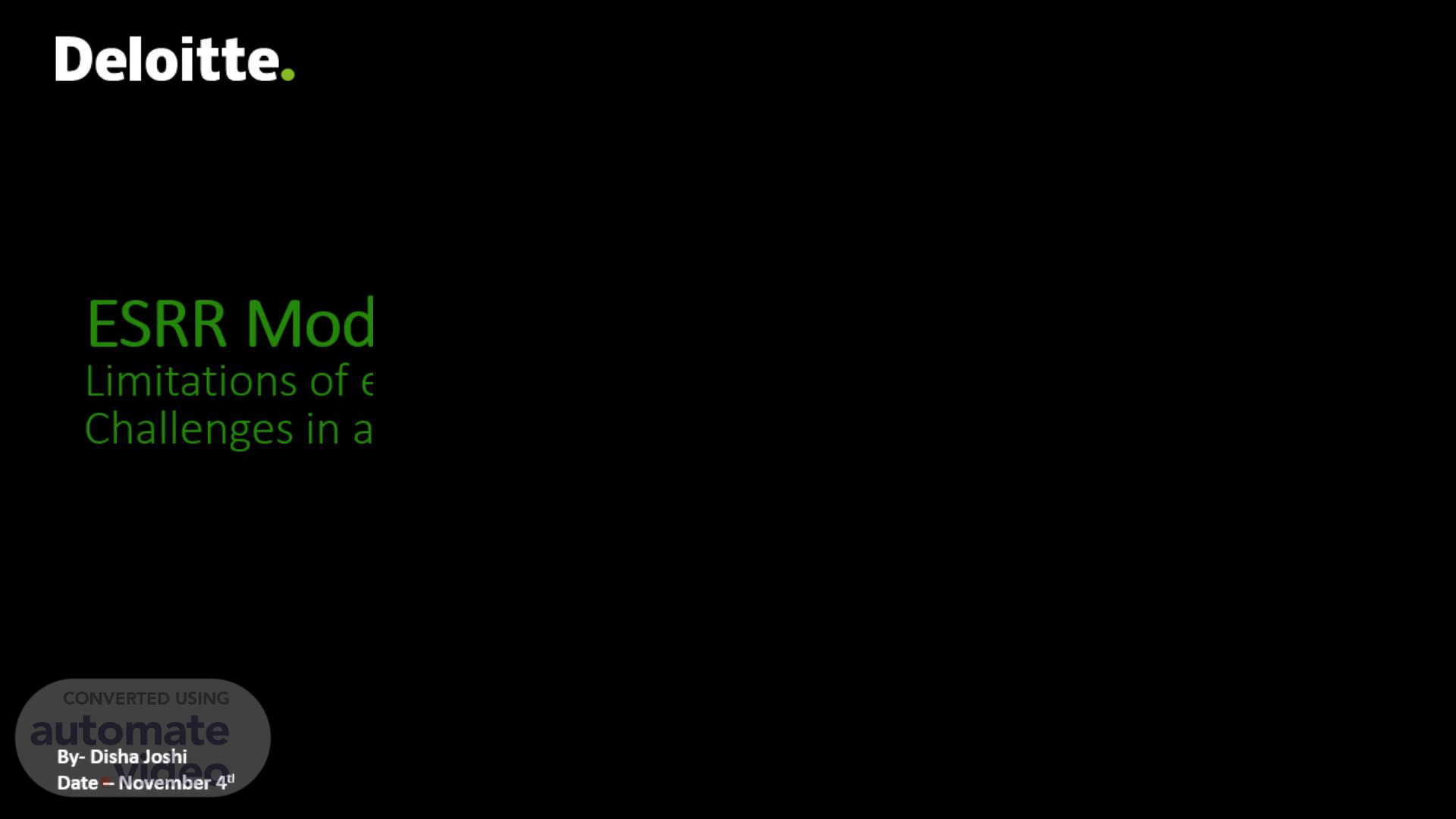
ESRR Model- Limitations of existing Excel Model and Challenges in application of Statistical Modeling
Scene 1 (0s)
ESRR Model- Limitations of existing Excel Model and Challenges in application of Statistical Modeling.
Scene 2 (9s)
AGENDA. Introduction Overview of Current Excel Model. Limitations of Current Excel Model-oversimplification. Limitations – Data Dependency & it’s impacts Statistical Modelling Challenges Case starting from scratch Leveraging existing model Expected outcomes & Benefits.
Scene 3 (22s)
Introduction. Our current Excel-based risk rating model, inspired by ESRS standards, faces significant limitations that hinder its effectiveness and reliability. This presentation will examine the key shortcomings of the existing model, explain why applying statistical modeling to it is not feasible, and propose an action plan to develop a more robust and accurate risk assessment framework. By understanding these challenges and embracing a data-driven approach, we can create a model that truly captures the complexity of environmental, social, and governance risks in our operations..
Scene 4 (46s)
Overview of Current Excel Model. Residual Risk score The final residual risk rating is determined by subtracting the sum of averaged control factors from the overall inherent risk score, providing a simplified view of the organization's risk exposure..
Scene 5 (1m 33s)
Limitations of the Current Model.
Scene 6 (1m 39s)
Limitations: Oversimplification of Complex Relationships.
Scene 7 (2m 16s)
Limitations: Data Quality and Availability Issues.
Scene 8 (3m 1s)
Statistical Modelling Challanges.
Scene 9 (3m 7s)
Challenges of transitioning from Basic to Advanced Methodologies.
Scene 10 (3m 47s)
Developing an effective risk model necessitates clear guidelines and principles that shape its construction. Key considerations encompass adaptability and user engagements, which are vital for model acceptance. A careful assessment of statistical methods, coupled with defined data inputs, will enhance the model’s robustness..
Scene 11 (4m 36s)
Leveraging Existing Model for Scope Definition. Identify Key Risk Areas.
Scene 12 (5m 13s)
Proposed Action Plan. Conduct a thorough analysis of current risk assessment needs, stakeholder views, and industry best practices. Develop a detailed project plan and logic and assemble a cross-functional literature relayed to the ESRS Standards. Phase 1: Discovery and Planning (Months 2-3).
Scene 13 (5m 56s)
Expected Outcomes & Benefits. Improved Accuracy Enhanced risk predictions through advanced modeling techniques and comprehensive data integration..